Overview

Welcome to Physio 101!
So, you’re interested in physio! Wondering where to start? What does physio in Australia look like? What are your options when you finish your degree?
Here, you’ll find information, tips, and physio students take over our OzTREKK Instagram account.
Physio Programs
We’re bone-afied experts
All of the graduate physio programs we work with will get you where you want to go on the path to becoming a physio, but do you know what makes them unique? Here we share some things you may not know yet about each program along with some super helpful student reviews and experiences.
If you have any questions along the way, please email us at physio@oztrekk.com.
Bond University
Program: Doctor of Physiotherapy
Duration: 2 years (6 semesters)
Starts: May
Location: Gold Coast, Queensland
Campus: Bond Institute of Health and Sport
The Bond Institute of Health and Sport is located at 2 Promethean Way, Robina, which is next to the Robina Hospital and adjacent to Skilled Park stadium and Robina Train station. It is about a five-minute walk to the Robina Train Station, and Bus 750 is a regular bus service between the station and the university. Need to get from the main campus to the institute? Your bus ride is approximately 17 minutes!
The Bond Doctor of Physiotherapy program is the first fully accredited Doctor of Physiotherapy in Australia! Like all of Bond’s degrees, the DPT is 3 years of study taught over full 2 years (6 semesters), so you will graduate ahead of the rest.
The Bond DPT is an “extended master’s degree” because of its research component, which many students have found valuable since Bond has been producing highly employable physio grads for more than 12 years!
Like all Bond programs, the DPT features Leadership, Management and Advocacy, and has the highest clinical placement hours in the whole of Australia with its six 5-week placements plus a 6-week internship.
Amazing Facilities
You will undertake studies in Bond University’s $20-million, state-of-the-art Bond Institute of Health & Sport. Features include clinical skills laboratories designed to simulate real medical environments, and modern teaching and research laboratories with the latest scientific equipment. The purpose-built tutorial rooms cater to small-group learning and lecture theatres are equipped with video streaming, wireless, and an audience-response system.
In the News
Survey Says…
“I love the small class sizes and all the close interactions with professor as it helps to facilitate better learning.” Catherine P, 2018
“Both campuses are great. The main campus is absolutely beautiful if most of your classes are there. The staff do care about your physiotherapy process here, which is hard to find.” Kai-Jing L, 2018
“Top-notch education and the teacher-to-student ratio makes it a great learning environment.” Simon M, 2019
Flinders University
Program: Master of Physiotherapy
Duration: 2 years
Starts: March
Location: Adelaide, South Australia
Flinders physiotherapy boasts small cohort sizes, which sets them apart from many other universities. Seventy percent of the staff work in senior clinical physiotherapy positions as well as lecturing at the university. This ensures they are delivering contemporary, evidence-based content and provides excellent context for physio students.
Bonus Certificates Embedded into Program
All students have the opportunity to complete a Level 1 Sports Trainer certificate accreditation with the SA Sports Medicine Australia, which is embedded within the curriculum. All students also complete a Flinders Chronic Condition Self-Management Certificate as part of the MPT degree.
OzTREKK Student Ambassador
Francis Tungcol began his studies at Flinders in February 2019. He’s also an OzTREKK Ambassador! Check out his Instagram account for details about the Flinders MPT and about life in Australia!
Macquarie University
Program: Doctor of Physiotherapy
Duration: 3 years
Starts: July
University Location: North Ryde (suburb of Sydney), New South Wales
The Macquarie University Doctor of Physiotherapy program is an extended and innovative curriculum that includes leadership and business and digital skills, such as podcasts, infographics and multimedia skills.
Macquarie features dedicated teaching and support team, whose staff and teaching rooms are all located in the same building and everyone is ready and willing to help if needed. Macquarie always makes an effort to get to know their students and to help them learn.
Survey Says…
“Very nice teaching staff… everyone really cares about the students here which is really comforting. Also, MD and DPT students have many lectures together and clinical hours together which is really interesting and fun!” Eric A, 2018
“I am 4 weeks into my program. All the lectures and tutorials are very organized, and delivered with a purpose (developing our clinical reasoning, evidenced-based practice, and patient-centered care).” Fred W, 2018
“It is a beautiful campus with great staff and facilities.” Daphne N, 2019
In the News
- Macquarie physiotherapy graduate shares her Australian educational experience – Part 1
- Macquarie physiotherapy graduate shares her Australian educational experience – Part 2
- Physiotherapy student having a blast at Macquarie
The Macquarie Doctor of Physiotherapy program consists of a combination of coursework and supervised clinical placements. You will undertake 150 days of clinical practice, both integrated throughout your program and in five-week blocks.
There are unique and interesting clinical placement opportunities in the second half of the program: overseas (Hyderabad India), corporate health at Taronga Zoo, and internships with elite sporting teams, e.g., Sydney FC.
University of Melbourne
Program: Doctor of Physiotherapy
Duration: 3 years
Starts: February
Location: Melbourne, Victoria
In 2011, Melbourne transitioned to their new three-year, graduate-entry master’s-level Doctor of Physiotherapy degree, the first of its kind in Australia.
The program was designed to include modules such as Leadership and Management to train students to use an innovative and entrepreneurial approach to advocate for change and influence resource allocation within the healthcare context.
The DPT also includes components of research work—with a minor thesis to be completed as well as selective subjects for research work in the final year. Students opting for these have even published their papers and literally begin to build their research portfolio in preparation for a PhD while still a coursework student.
OzTREKK student Christian Boivin, Doctor of Physiotherapy (2017)
What skills has the Doctor of Physiotherapy helped you develop?
“The top-level researchers and dedicated instructors bring the most relevant information within the context of years of clinical experience to deliver it to us through a fast-paced and hands on program. This course has helped me develop study and learning skills that undergraduate studies could never compare to. Between the sheer amount of information and the clinical skills that we are required to learn in a short amount of time it has caused me to develop a structured routine and excellent time management skills to stay on top of my game.”
What have been the highlights of your time at the University of Melbourne?
“I have moved across the world for school, but the support and caring nature of our professors, how well the group of international students come together to support each other stand out. You truly never are alone, especially when you first get here.”
Survey Says…
“I love my professors and how supportive and understanding they are. Anatomy cadaver lab is pretty cool and the only uni in Victoria that has one!” Ansley L, 2018
“The program is a little unorganized at times, content is generally good though, profs are fantastic, especially in cardio—some legitimate leaders in their field.” Jonathan M, 2018
“I love the University of Melbourne. It is a large campus, but it is quite beautiful and the lecturers are fantastic.” Alexis S, 2019
In the News
Monash University
Program: Doctor of Physiotherapy
Duration: 3 years
Starts: July
Location: Clayton, (approximately 40 km southeast of Melbourne), Victoria
A key feature of the Monash Doctor of Physiotherapy (DPT) program is that you will be a physiotherapist in training from Day 1 of the course.
You will get hands-on experience and exposure to the clinical environment from the start of your degree. Monash offers early work-integrated learning opportunities where you will see physiotherapists in action from Year 1. This is an opportunity to observe physiotherapy practice in a range of settings including private practice, acute hospital and aged care.
You will also take part in simulation activities and practice your new skills in Monash’s specialized physiotherapy practice labs and rehabilitation gym on campus. In addition, there are opportunities to learn collaborative practice alongside students from other areas of health, which will prepare you to provide the best possible patient care.
University of Queensland
Program: Master of Physiotherapy Studies
Duration: 2 years (4 regular semesters, 2 summers semesters)
Starts: November
Location: St Lucia Brisbane, Queensland
The UQ School of Health and Rehabilitation Sciences administers several clinics, offering a quality service to the community. These clinics provide you with experience in order to gain clinical competency, as well as the opportunity to experience specialized teaching and research.
The University of Queensland Physiotherapy School offers a graduate-entry two-year Master of Physiotherapy Studies designed for those students who have a bachelor’s degree and wish to gain qualifications to register as a physiotherapist.
UQ is a leader in tele-rehabilitation research and practice, and run an interprofessional tele-rehabilitation clinic that services people in remote and rural Australia. UQ also has a growing interprofessional education curriculum to enhance your ability to work in an inter-professional healthcare team.
You will have the opportunity to work in a team to complete a research project, receiving mentorship from internationally recognized physiotherapy researchers.
Survey Says…
“I love UQ and this program. It’s intense but so fulfilling. In the 8 months I’ve studied here I feel like I have learned so much. The professors are awesome and you really feel as if you are getting the best most up to date evidence presented to you every day.” Joel T, 2018
“I like that our class is of 38 which means we have greater exposure with professors and they teach us handling techniques themselves. UQ is rated one of the highest in Australia and I m hoping to take a lot back home especially manual handling skills which is years ahead of Canada.” Tony K, 2018
“Great program I’m learning lots and great campus with lots to do all the time.” James D, 2019
University of Sydney
Program: Master of Physiotherapy
Duration: 2 years
Starts: March
Location: Lidcombe, (approximately 16 km from Sydney), New South Wales (moving to Sydney CBD in 2021)
The Master of Physiotherapy develops the ability to use highly-developed clinical reasoning skills to assess, diagnose and treat people with movement problems caused by a wide variety of joint, muscle, nerve and metabolic disorders. You will also learn to help people avoid injuries and maintain a fit and healthy body.
During this two-year degree, you will explore introductory and advanced musculoskeletal, neurological, and cardiopulmonary physiotherapy, applied to patients across the lifespan. Biomechanics, occupational health and community health are incorporated in various units of study, and evidence-based practice and professional practice are embedded throughout the curriculum.
Moving to main Sydney Campus in 2021
The Sydney Faculty of Health is moving Camperdown campus in 2021, and they have already begun the transition. In some semesters, students will have classes at both the Cumberland and Camperdown campuses. Classes will be timetabled to allow students with a standard enrollment pattern to come to a single campus each day, where possible.
Why Study with Sydney?
• Brand new education and research facilities
• Graduate career-ready and in demand
• Finish in 2 years as a postgraduate student
• Hands-on clinical training
• Learn from highly respected practitioners and researchers
Survey Says…
I like the university. Being on the Cumberland campus is slightly outdated; however, it helps develop friendships because the campus is unique and small so that you recognize people in your program much easier.” Spencer D, 2019
In the News
Applications, Interviews
& Offers

It’s going tibia okay!
Now that you’re familiar with the graduate physio programs offered by our university partners, let’s get you another step closer to a career in physiotherapy! The application, interview, and offer processes can vary by university, so we have outlined all the things you need to know to make the process easy and breezy.
Our Physio Team has worked tirelessly in the last couple months to create a pre-assessment process that will help you find your best fit for eligibility.
Watch this video to see exactly how the process works, and then send your pre-assessment email along to us!
The Interview Process
Once you have applied, you may need to sit an interview! Two of our partners, Bond and Melbourne, require students to take part in an interview as part of the assessment process. This means that your interview performance will be reviewed alongside your grades and prerequisites. Both universities follow the MMI format for their interviews, which means several faculty members will be on hand to ask you questions (individually), and you’ll have a moment to think of your answer before moving on to the next interviewer’s question.
Watch this video to learn more about interviews and get some tips for success!
The Offer Process
Our fingers are crossed for you as you enter the next phase of the application process: offers! When offers arrive, we have the distinct pleasure of contacting students and making their dreams come true.
Much like deadlines and interviews, each university has a different timeline for issuing their good news. Have a look here to find out when you can expect your offer from your top choice!
General Offer Timeline
- Bond – From October
- Flinders – Rolling, beginning in April
- Macquarie – Rolling, beginning in August
- Melbourne – From mid-October
- Monash – Rolling, beginning in August
- UQ – Rolling, beginning in April
- Sydney – Rolling, beginning in April
Should you receive an offer (or more than one), your admissions officer will also counsel you if you’re unsure which program is the right one for you. After all, there’s a lot to think about: university location, class sizes, practical experiences, campus life… plus a whole lot more!
We’re here to guide you through the entire acceptance and predeparture processes. Whenever you have questions or concerns, we are just an email or phone call away!
Studying & Placements
Australia’s better than the wrist!
Want to learn more about the programs and how placements run? We’ve got the details for you! Select your preferred university below to learn more about what it’s like to study and how placements work.
Bond University Studying & Placements
Program Structure
The Bond Doctor of Physiotherapy program commences in Semester 2 (May) every year, and classes are generally scheduled from 8:30 / 9 a.m. – 4 p.m., Monday to Friday.
The DPT comprises 6 semesters (May, September, January) for a total of 2 years, allowing students to complete their degree earlier.
The program uses a problem-based learning (PBL) model for education. Resource teaching sessions (lectures and practical problem-solving classes), along with seminars and assignments support and extend the PBL mode of learning. Examination formats include objective structure clinical examinations (OSCEs), theory papers, assignments, and oral presentations.
Placements
The Doctor of Physiotherapy assists students to progressively develop and apply their knowledge, skills and professional attitudes and behaviours to undertake physiotherapy practice and places a strong emphasis on clinical experiential learning with up to 1440 hours of learning in a clinical environment. Clinical practice experiences are designed to produce work-ready, entry-level graduates who are competent to practice across the lifespan in a range of environments and settings.
Like all Bond programs, the DPT features Leadership, Management and Advocacy, and has the highest clinical placement hours in the whole of Australia with its 6 five-week placements, plus a 6-week internship.
The highly regarded Bond Doctor of Physiotherapy provides more than 1,200 hours of clinical placement across several core areas.
On Customizing Placements
Each student can meet with the Clinical Team to shape what kind of placement he or she prefers and where they would like to go. This is coupled with the 4 core placement experiences (above) that all students will be placed in, and as such, create a solid grounded clinical experience and exposure.
The other placements complement and extend the student’s clinical portfolio. This may include more private practice, sports and MSK or overseas placements, or remote and rural, depending on the student’s interests. Of course, Bond tries to match students with their preferences wherever possible.
We Asked Bond…
How has COVID-19 changed the way your program is being offered, if at all? Were students given any opportunity to get involved in providing help to the community?
We have been offering full online courses and limited face-to-face interaction. We rescheduled all our research and business subjects up front along with the theory for all our core subjects to accommodate the inability to teach in person.
With COVID now slowing down (i.e., no new cases in Queensland), we hope to have the students back in class soon so we can deliver all the practical and then clinical practice. All we needed to do was a simple reshuffle of the content and subjects.
Need more info? Email us at physio@oztrekk.com for a Physiotherapy Admissions Guide!
Flinders University Studying & Placements
Program Structure
Flinders runs two semesters per year: semester 1 (February / March); and semester 2 (July). The Master of Physiotherapy begins every year in semester 1.
A typical week for a first-year Master of Physiotherapy student involves a combination of small-group tutorials and practical skills sessions. In first year, these sessions may be on musculoskeletal or cardio-respiratory physiotherapy. There is a large proportion of content of clinical based topics with a mix of lecture presentations, workshops, tutorials, and practical skills. This is augmented using clinical simulation. This knowledge is then put into practice through a 5-week end-of-year clinical placement experience.
For second-year students, a typical week is out on clinical placement (could be in a hospital, private practice, aged care, Health2GO). Students have approximately 6 months of full-time clinical placement experience in a range of clinical settings supported with clinical, health promotion, and research-based subjects.
Placements
All students are required to complete placement experiences across a scope of clinical practice, encompassing musculoskeletal, cardiorespiratory, and neurological physiotherapy practice. Students can put in preferences for clinical placement, but for accreditation requirements, it is important the uni ensures each of these areas are covered for all students prior to graduation. Flinders ensures each student completes at least one placement in a rural or remote area of Australia.
The Flinders Placement Experience Coordinator works closely with students to ensure they have a rich clinical experience including private, NGO, and public sector, and across the lifespan including pediatrics and aged care. Flinders is proud to work with students to support their specific interests wherever possible.
We Asked Flinders…
How has COVID-19 changed the way your program is being offered, if at all? Were students given any opportunity to get involved in providing help to the community?
COVID-19 has meant that we have offered some placement opportunities via Telehealth. We have also moved some of our teaching online; however, we will still ensure that all essential clinical skills are taught and assessed face to face. Small group practicals began the week of June 15.
Our students remained on clinical placement throughout the pandemic. This includes supporting acute care hospitals. We have been able to provide services through both Telehealth and Health2Go (clinic on campus) to the community that they would have not been able to access otherwise due to some ambulatory care services closing down across public health.
Need more info? Email us at physio@oztrekk.com for a Physiotherapy Admissions Guide!
Macquarie University Studying & Placements
Program Structure
In general, Macquarie University has two semesters per year: semester 1 – February / March; and semester 2 – July. The Doctor of Physiotherapy begins every year in semester 2.
The Macquarie DPT is a blended curriculum with a mixture of online content, including lectures and interactive activities as well as small group tutorials and practical classes. This allows for both structured class time and more flexible learning activities.
Placements
Clinical placements are integrated with academic classes so students can apply their learning as they work through the course (along with study/food/fun/sleep)!
Students can submit preferences for where they would like to do a placement, but this is not guaranteed. Macquarie has a good system of placement allocation which aims to be fair for everyone.
The uni has a variety of clinical partners and plenty of placements, but if students have unique and interesting ideas for placements, they are always happy to hear them!
We Asked Macquarie…
How has COVID-19 changed the way your program is being offered, if at all? Were students given any opportunity to get involved in providing help to the community?
Our Year 3 students continued with their final clinical placements throughout the COVID shutdown. We helped keep people (and their lungs!) moving and helped to deal with the painful consequences of a rapid move to working from home for many people.
COVID-19 also provided a great opportunity to try out some different ways of learning and interacting, such as accruing clinical hours via telehealth modes and using teleconferencing for tutorials and assessments. We are now moving toward a more blended style of offering allowing the best of being face-to-face and hands-on, whilst using all the best bits of online learning to create an even more engaging and future-focused curriculum to meet the needs of the modern workforce!
Need more info? Email us at physio@oztrekk.com for a Physiotherapy Admissions Guide!
University of Melbourne Studying & Placements
Program Structure
In general, Melbourne Uni has two semesters per year: semester 1 (February / March); and semester 2 (July). The Doctor of Physiotherapy begins every year in semester 1, usually in February. The semesters are 17 weeks in duration, allowing the university to incorporate the clinical component of the course within the subjects.
Typically, it’s a very packed schedule with lots of practical group work. There is increasingly a blended learning mode especially with COVID-19, but students typically spend at least 3 days on campus for classes, tutorials, and practical work. Fridays are usually lighter days so students can have a more relaxing end to rest up.
In the first year, students complete 100 points of compulsory subjects:
- Research and Evidence 1
- Physiotherapy Theory and Practice 1
- Foundation Physiotherapy Sciences
- Neurological Physiotherapy 1
- Musculoskeletal Physiotherapy 1
- Cardiorespiratory Physiotherapy 1
- Physiotherapy Theory and Practice 2
Check out how University of Melbourne physiotherapy students use augmented reality.
Placements
For the Global Clinic elective, students can choose the country and setting of placement to go to, as long as they are approved to be safe and credible institutions.
In addition, there are electives in the final year that students can choose from and in some ways work towards customization of future areas of specialization based on their interests. The Melbourne DPT gives students a solid background in all areas so they can make an informed decision on an area of specialization when they enter the workplace.
A key feature in the program is the number of practical work/placements that have been packed into the program especially in comparison to a 2-year master’s program. The Canadian physio registration board requires a high level of practical and hands-on approach and trained hours. Melbourne DPT graduates are placed in a good stead for registration in Canada. Graduates from the program are also able to register with the Australian Health Practitioner Registration Authority (AHPRA) and work as a physiotherapist in Australia and New Zealand.
The university’s close relationships with clinical partners such as Melbourne Health, Austin Health, Western Health, St. Vincent’s, and Royal Children’s Hospital allows students to experience exclusive clinical experience in the country’s leading institutions.
Need more info? Email us at physio@oztrekk.com for a Physiotherapy Admissions Guide!
Monash University Studying & Placements
Program Structure
Monash University has two semesters per year: semester 1 (February / March); and semester 2 (July), and the Doctor of Physiotherapy starts in July every year.
The Monash DPT program will look different throughout each year of the program. However, a student can expect around 18 contact hours (in class) per week plus additional self-study time for every contact hour.
Classes are generally scheduled from Monday to Thursday, although there are some Friday attendance requirements. In the second and third years of study, most of the time will be spent on clinical placements gaining practice experience at Victoria’s leading hospitals and health services.
Placements
Monash University partners with some of the state’s major healthcare providers to give students access to high-quality clinical training. Placements take place in a range of facilities from hospitals to rehabilitation centres to private practice. Your placement could take you to The Alfred—Australasia’s largest trauma centre, to community rehabilitation at Peninsula health, or even to a rural healthcare service.
Clinical education in the Monash DPT program includes exposure to acute, subacute and community / outpatient experiences, with cardiorespiratory, neurological, and musculoskeletal patients across the lifespan.
In the final clinical placement in Year 3 of the DPT program, students will be able to select from a range of clinical placements depending on their interest and previous experiences upon availability. Students can also elect to complete an additional voluntary clinical placement in their area of interest in the final year of their program.
Need more info? Email us at physio@oztrekk.com for a Physiotherapy Admissions Guide!
University of Queensland Studying & Placements
Program Structure
The UQ Master of Physiotherapy Studies can be completed in 2 years as the program runs over 4 regular semesters, and 2 summers semesters. The program begins in November each year.
The program is designed to equip students with the theoretical knowledge, skills, and professional attributes for a career in physiotherapy. You’ll gain an extensive body of knowledge and the clinical abilities, problem-solving skills and professional attributes to provide competent physiotherapy service in a wide range of contexts.
- You will typically have about 20 hours of face-to-face contact, which includes a ranging of learning experience such as blended lectures, tutorials, hands-on practical sessions and clinical visits to hospitals, schools, aged-care facilities and sporting organizations.
- You will spend almost half of your time doing hands-on practice and clinical simulation,
- UQ has a high staff:student ratio in their practical sessions for tutors to give you personalized feedback on your practical skills.
- In the final part of your program, you will be in full-time clinical immersion under the supervision and mentorship of leading physiotherapists.
Placements
As a UQ physio student, you will undertake more than 1025 hours of supervised clinical practice in a range of clinical settings that includes hospitals, educational facilities, other health care organizations, private practices and UQ’s internal clinics.
You can indicate your preferences for your placements in terms of area of practice and location. You may also self-source your observational placement to customize the placement based on your interest!
UQ has a dedicated staff member who will support you through the international registration process. This staff member has taken the Physiotherapy National Exam and has worked as a physiotherapist in Canada.
During your placements, students will have the opportunity to apply your theoretical knowledge acquired through coursework and research to practice and develop your clinical skills in real-life settings. You will commence full-time clinical placements in the second year of the program, and UQ has several staff dedicated to source placements and support students while on placement.
UQ has physiotherapy clinics in specialized areas of practice, including developmental pediatrics, musculoskeletal and sports injury, and neurology, ageing and balance. You’ll get to apply your knowledge and develop practical skills during your studies.
Read more about clinic placements for UQ physiotherapy students.
We Asked UQ…
How has COVID-19 changed the way your program is being offered, if at all? Were students given any opportunity to get involved in providing help to the community?
- We adapted learning material to be delivered online when COVID-19 restrictions did not enable face-to-face teaching to occur.
- We will return to face-to-face practical teaching next semester, but are prepared to move online if needed if a second wave occurs. Any international students who are not able to enter Australia due to travel restrictions will be able to study remotely and will be supported with online sessions.
- Student clinical placements have continued through the COVID-19 crisis. Our students have had the opportunity to contribute to the healthcare workforce on placement. Students were also offered the opportunity to be part of a surge workforce that would be called upon if needed.
Need more info? Email us at physio@oztrekk.com for a Physiotherapy Admissions Guide!
University of Sydney Studying & Placements
Program Structure
Like most other universities, the University of Sydney has 2 regular semesters, semester 1 (February / March); and semester 2 (July). The 2-year Master of Physiotherapy begins in February / March each year.
The Master of Physiotherapy includes studies in neurosciences for physiotherapists, functional musculoskeletal anatomy, and advanced cardiopulmonary, musculoskeletal and neurological physiotherapy. Students will undertake a comprehensive program of practicum, professional and scientific practice studies, enabling them to confidently practice as a physiotherapist health-care organizations, private practices, schools, and community, sports and workplace settings.
Placements
Clinical placements begin in Year 2. Students complete four block-mode clinical placements throughout their program, which are complemented by coursework studies. Sydney MPT students are required to complete at least one of those placements in a rural or regional location.
Clinical and academic components to this program seek to create graduates who are ready to enter the profession and who have a range of experience in different social and clinical contexts.
- Sydney Master of Physiotherapy student has placement in Vietnam
- What are University of Sydney physiotherapy placements like?
Need more info? Email us at physio@oztrekk.com for a Physiotherapy Admissions Guide!
Returning to Canada
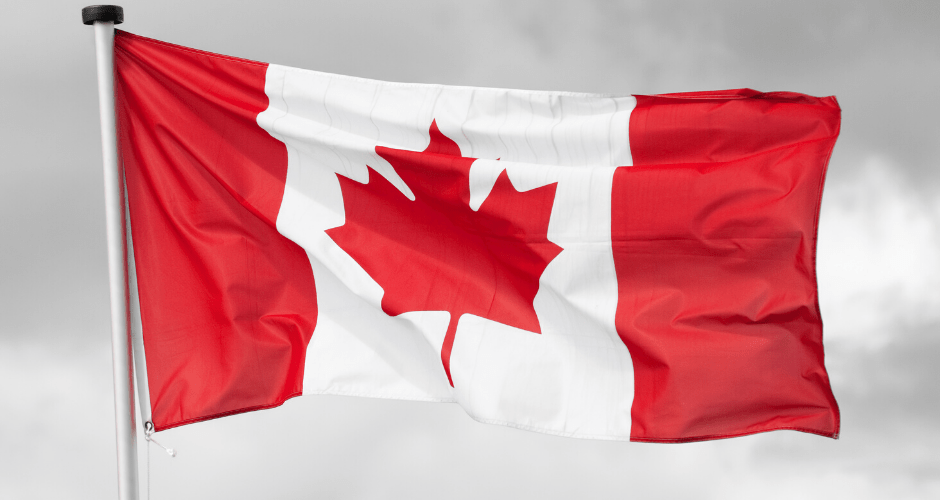
Are you in-tendon to return to Canada?
What happens when you finish your physio studies and are ready to return home to Canada? We have that info for you and can help you understand the process. Join the webinar tonight too for more info from a graduate who has been through it all!
You’ve graduated! Congratulations! Now what?
First, complete a course called “The Context of Physiotherapy in Canada,” offered at the University of Toronto, which has an online course that you can complete before leaving Australia.
In order to practice physiotherapy in Canada, you must register with the physiotherapy regulatory body in the province you intend to practice. The Canadian Alliance of Physiotherapy Regulators (CAPR) recognizes degrees from Australian universities, as long as you meet the requirements including completion of a minimum number of clinical hours.
Once you complete the course, your next step is to apply to the Canadian Alliance of Physiotherapy Regulators (CAPR) to have them assess your qualifications based on two criteria:
1. Education (degree at an accredited university)
2. Supervised clinical hours (minimum of 1,025)
Once the Alliance successfully assesses your credentials, you would need to complete the Physiotherapy Competency Exam (PCE) like any other physiotherapy graduate in Canada prior to provincial registration:
- Have credentials assessed by the CAPR
- Write the Physiotherapy Competency Exam (PCE)
- Register with the provincial regulatory body where you intend to practice
Webinar with Sydney MPT Graduate
University of Sydney MPT grad, Alexis, shares her experience with living and studying physiotherapy in Australia, and coming home to practice after she graduated.
Read Alexis’ story: Sydney physiotherapy student talks about her path to success
Get more details on our Practicing Physiotherapy in Canada page!
Staying in Australia

I’m patellin ya—it’s great!
So, you’ve graduated. You’ve landed a great job… and it’s in Australia. What now?
While most graduates plan to return home to Canada, many also fall in love with Australia and choose to stay either for a little or a lifetime! Here are the basics about staying in Australia to practice physiotherapy.
Australian-educated physiotherapists must be registered with the Physiotherapy Board of Australia before they can practice. You can apply for registration through the Australian Health Practitioner Regulation Agency (AHPRA) about 4 to 6 weeks before graduation.
As of September 23, 2019, all of OzTREKK’s physiotherapy are recognized as accredited by the Physiotherapy Board of Australia.
To register to practice in Australia, you can register online.
Graduates must register within 12 months of graduation. When you renew each year after that, you’ll be asked about your recent practice. If you don’t meet the standard, you’ll need to provide more information.
1. In the online portal, create a profile and prove your identity.
2. When you register, you’ll be asked about criminal history, health impairments and English proficiency.
3. Agree to abide by the Code of Conduct which means that you will provide safe and ethical care to patients.
4. Complaints can be made against your conduct, performance or health.
5. Declare to let the board know if your criminal record changes and to keep track of your continuing professional development.
6. Pay the fee.
Get the full details about registering as a physiotherapist in Australia!

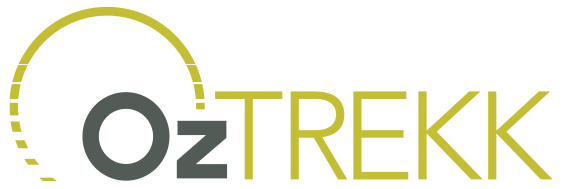



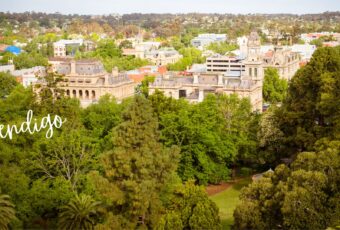


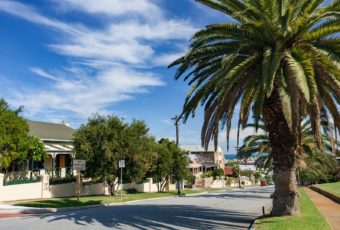
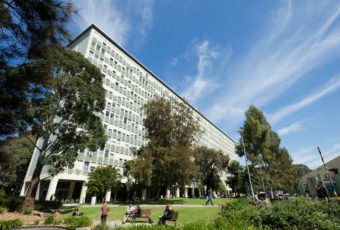

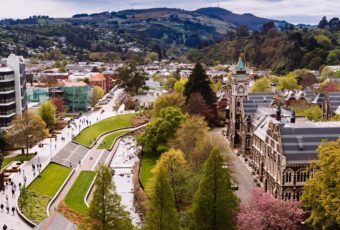

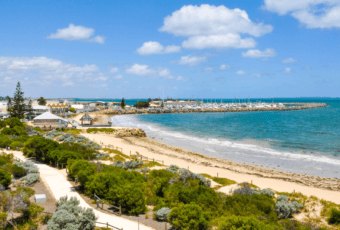


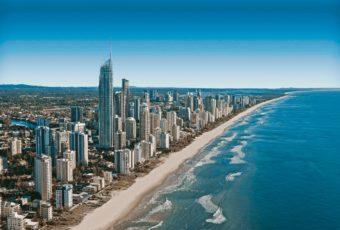


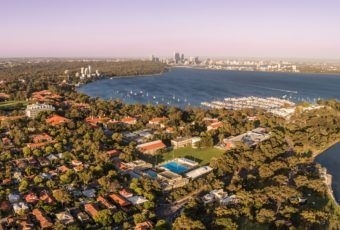






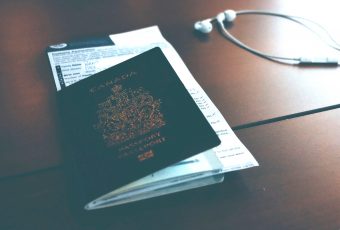





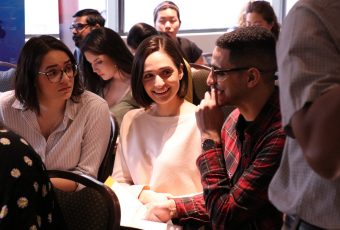

Ask A Question
Ask us about your program of interest, or if you have a question about our services.
CONTACT US TODAY